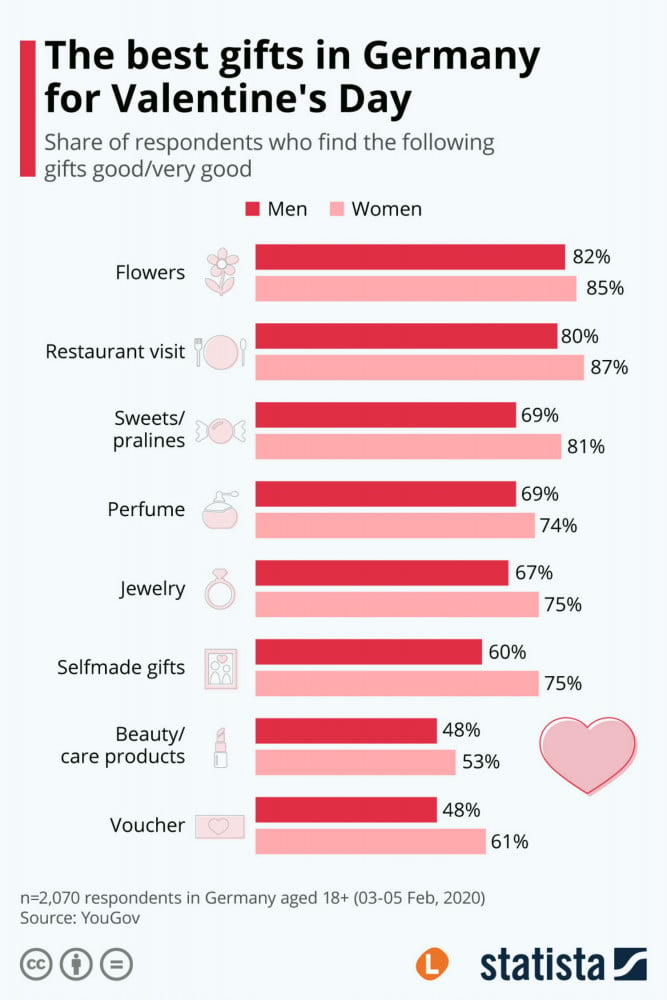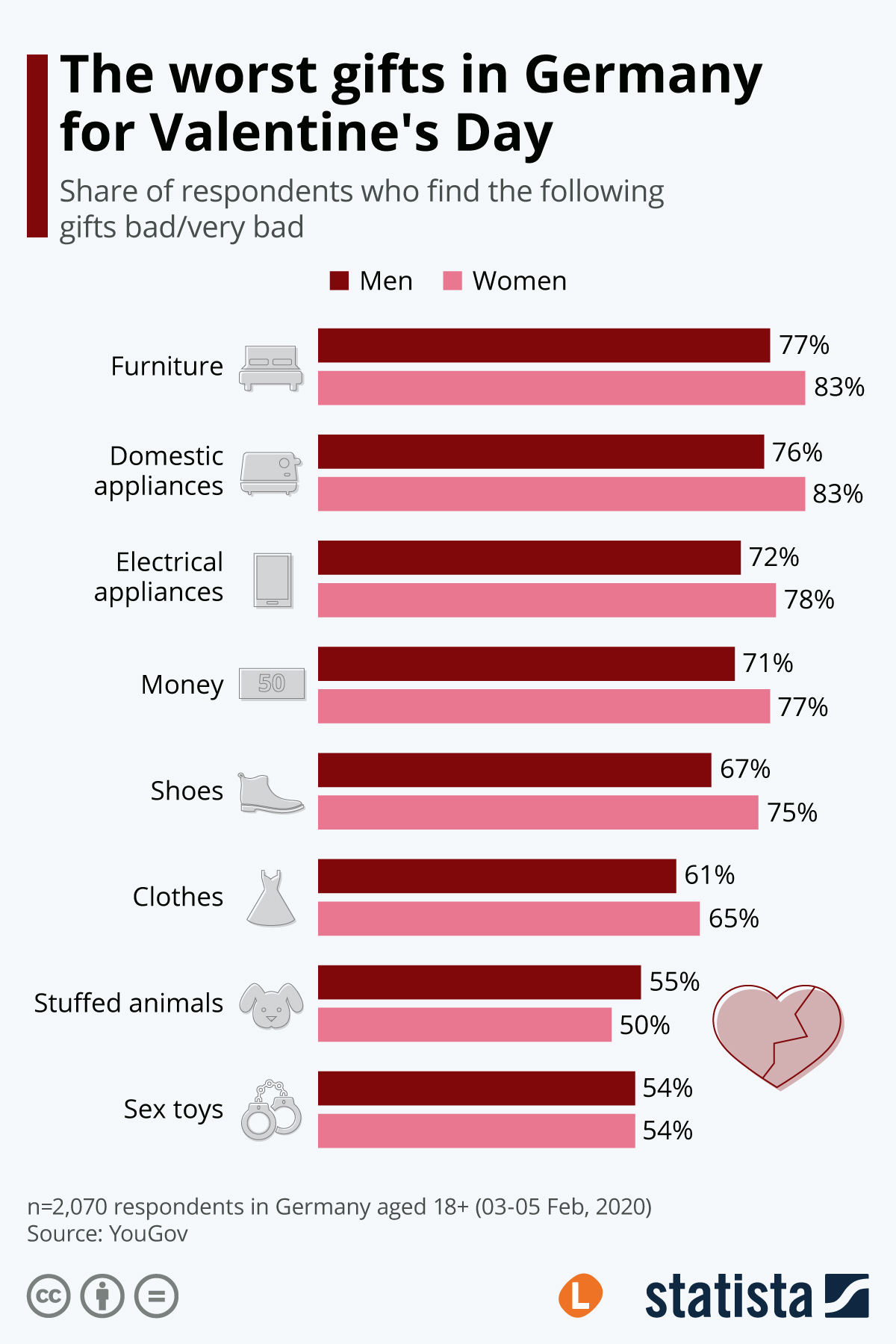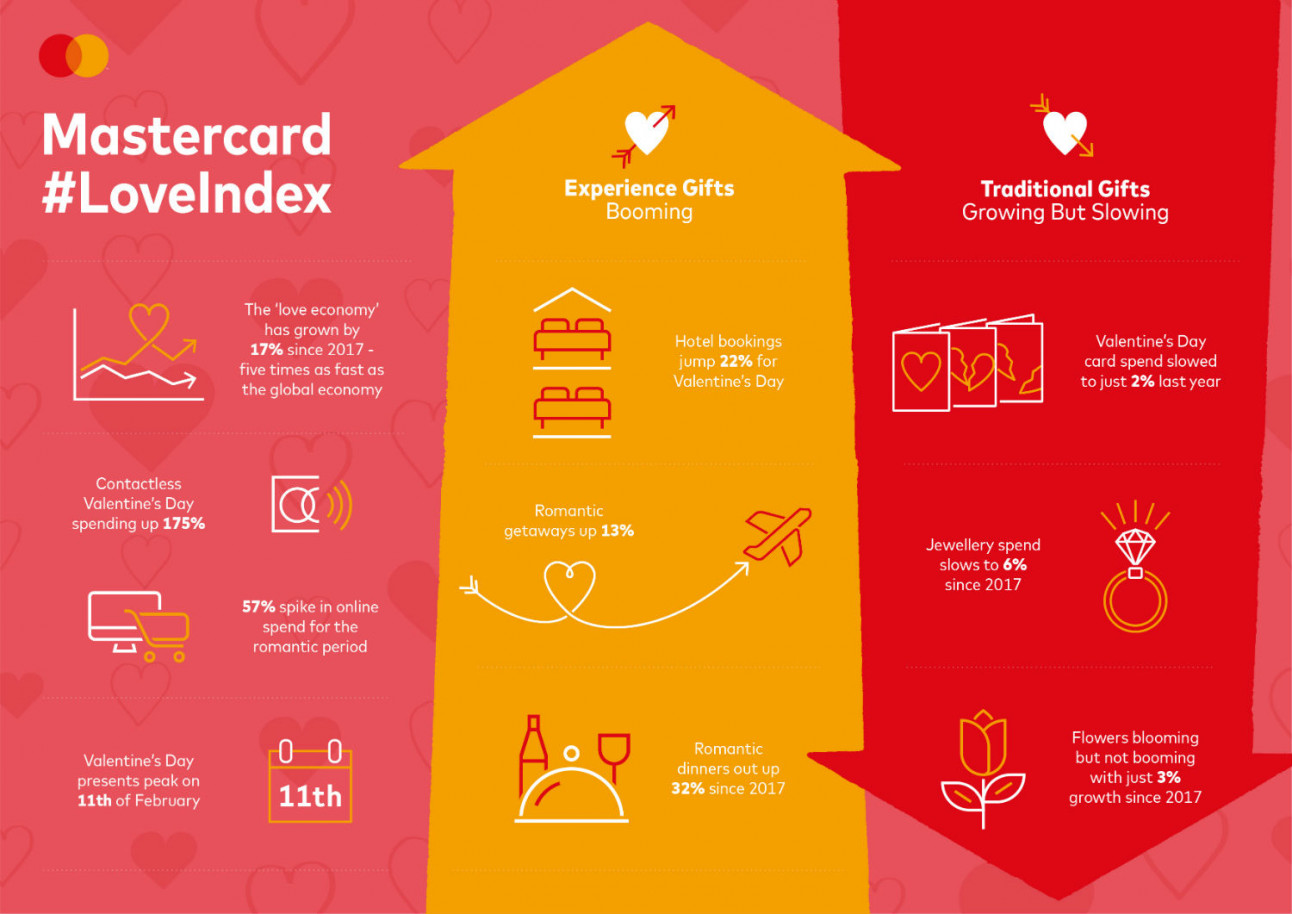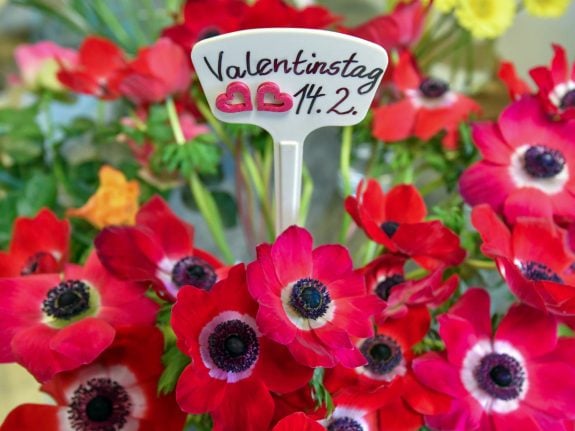The annual day of love on February 14th isn't as big in Germany as it is in countries like the US. But since the 1950s Valentine's Day has grown increasingly popular across the country.
The day associated with boxes of chocolate and red roses hasn't always been a thing in Germany.
It was only in the 1950s after the Second World War that sending out cards and giving gifts first appeared. American soldiers stationed in Germany at the time are believed to have brought along some of their traditions with them, including Valentinstag.
The first Valentine's Ball is said to have taken place in Nuremberg in 1950. The tradition slowly caught on over the next few decades. Whereas in the 1970s many Germans still had no idea what Valentine's Day was, nowadays it's gained a foothold across the country.
This can especially be seen in Germany's flower industry – which profits significantly from the annual holiday.
The following chart from Statista shows what Valentine’s Day gifts are considered the best among men and women in Germany in 2020.
 Photo: Statista
Photo: Statista
Flowers still top the list, followed by dinner out in a restaurant, and then sweets.
There are some things that Germans don't want for Valentine's Day as well.
 Photo: Statista
Photo: Statista
Germany: new global Valentine’s Day champion?
While Germany was slow to fall in love with Valentine’s Day, a recent “Love Index” carried out by Mastercard shows that Valentine’s Day sales are growing in Germany, even as they are slowing or even declining in other parts of the world.
The Mastercard Love Index combines data from credit, debit, and prepaid card transactions from around the world to analyze spending in the “love economy.”
 Photo: Mastercard Deutschland
Photo: Mastercard Deutschland
According to the study, Valentine’s Day expenses in Germany have risen by 24 percent since 2017. Around €40 million was spent on the holiday across the country in 2019, up by 40 percent since the previous year.
In Germany, there is an increase in so-called experience gifts, such as trips and romantic outings. While growth in sales of traditional Valentine’s cards has slowed globally, it is up by 12 percent in Germany.
Still, flowers seem to win the day in Deutschland. While the growth in flower sales is also slowing globally, German spending on flowers rose by 49 percent last year.
So, if you want to celebrate Valentine’s like the Germans, head to the local florist.
Happy spending!



 Please whitelist us to continue reading.
Please whitelist us to continue reading.
Member comments